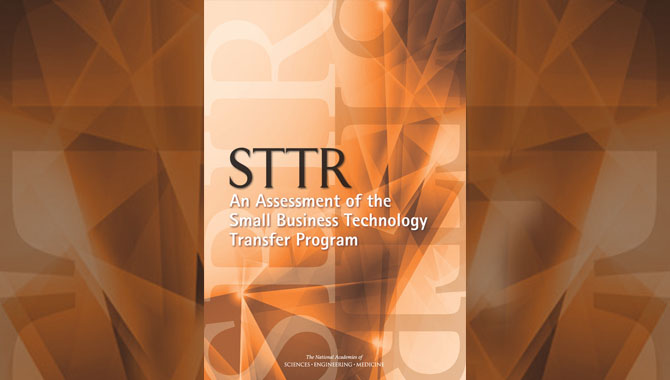
A recent report from the National Academies of Sciences, Engineering, and Medicine reviews and prioritizes the technologies in NASA’s draft 2015 Space Technology Roadmaps.
A key component of leadership in aerospace is continually advancing technology to meet evolving mission needs. Starting in 2010, NASA began crafting roadmaps to guide technology development at the agency. The roadmaps identify state-of-the-art technologies that will enable missions in coming decades, with each roadmap focused on a particular technology area (TA). The original technology roadmaps were reviewed by the National Academies, with input from an independent expert committee, before being formally released in 2012.
In keeping with an agreement to update the Space Technology Roadmaps every four years, NASA released an updated set of draft roadmaps in 2015. Instead of the 14 TAs listed in the 2010 version, the 2015 roadmaps include 15 TAs as aeronautics joined the list. Compared with the previous version, the new roadmaps emphasize utility by making it easier to identify cross-cutting technologies that support multiple TAs, which reduces the potential for duplication of effort. There is also a stronger link between proposed technology and specific agency goal, making clear the practical application of each concept. The technologies are intended to facilitate short-term agency mission goals while supporting long-term agency plans.
Following the development of NASA’s latest draft roadmaps, the National Academies was asked to convene a committee to review and prioritize the technology areas in the 2015 versions. The duly formed Committee on NASA Technology Roadmaps identified 42 new technologies in the 2015 draft roadmaps. Of these, they considered five to be high priorities for development by NASA because the technologies are critical for upcoming agency missions and unlikely to be developed by other organizations, such as industry or academia, within the necessary time frame.
According to the National Academies report, NASA Space Technology Roadmaps and Priorities Revisited, the new high-priority technologies for 2015 are Grappling, Remote Interaction, Terrain-Relative Sensing and Characterization, Autonomous Targeting, and Thermal Protection System Modeling and Simulation.
- Grappling is relevant to a range of planned missions, including the Asteroid Redirect Mission (ARM), which is part of the agency’s proposed Journey to Mars. Grappling technology will enable missions to capture and retrieve an asteroid—or a boulder from an asteroid—in order relocate it to another orbit or collect samples. Grappling technology could also be used in the future for commercial applications such as asteroid mining.
- Remote Interaction will improve human control over remote autonomous systems, such as robots, which will further both unmanned science missions and human exploration.
- Terrain-Relative Sensing and Characterization and Autonomous Targeting are related and critical for a wide variety of future missions. The game-changing Terrain-Relative Sensing and Characterization technology will help missions land safely and precisely beside areas of high scientific interest, while Autonomous Targeting will facilitate vehicles’ ability to assess terrain for the purpose of landing and exploration.
- Thermal Protection System Modeling and Simulation is expected to enable the design of more effective heat shields to be used during atmospheric entry on Mars, Earth, and other locations. The technology will be used to overcome limitations in current modeling systems as a means of enhancing related Entry, Descent, and Landing (EDL) technologies.
Out of all of the technologies reviewed in the 2015 draft Space Technology Roadmaps, the highest priorities fall into six categories: Radiation Mitigation for Human Spaceflight, Lightweight and Multifunctional Materials and Structures, Environmental Control and Life Support Services (ECLSS), Guidance, Navigation, and Control (GN&C), Entry, Descent, and Landing (EDL) Thermal Protection Systems (TPS), and Grappling, Docking, and Handling.
A second goal of the National Academies report was to recommend a methodology to be employed during independent reviews of future roadmap updates. The committee stated that the reviews should be conducted every four years as planned, but they may be reviewed more frequently if there are significant changes to the roadmaps in the interim. Before the National Academies reviews the draft roadmaps, the NASA Technology Executive Council and Center Technology Council (NTEC/CTC) should prioritize the technologies in the roadmaps, grouping them into four categories depending on desired action: Lead, Collaborate, Watch, Park. Finally, the report suggested that the nature of future reviews be based on the degree to which the roadmaps have changed. If the changes are major, the review should be comprehensive; if the number of proposed new technologies is small, the review should focus on those technologies only.
Once the 2015 Space Technology Roadmaps are finalized, they will be formally released and used to guide and prioritize upcoming technology development across the agency.
Read the National Academies report: NASA Space Technology Roadmaps and Priorities Revisited.
Review NASA’s draft 2015 Space Technology Roadmaps.
Read an APPEL News article about the 2015 Space Technology Roadmaps.









